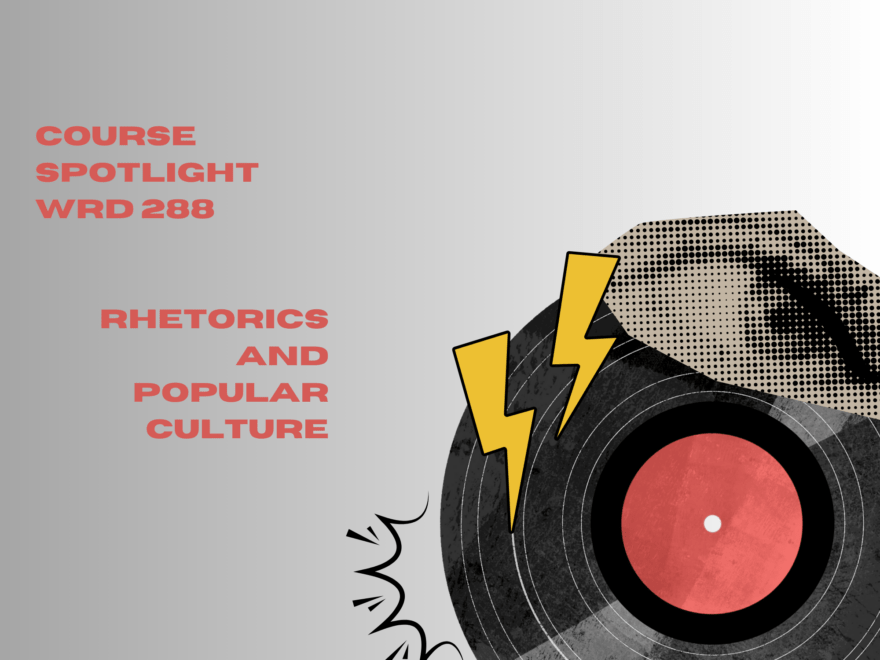*Originally posted by Leo Swearingen in Winter Quarter, 2024, with edits made to apply to Dr. Elliott’s iteration in the upcoming Spring Quarter 2025.
At the intersection of The Avengers and Aristotle, WRD 288 Rhetoric & Popular Culture emerges to explore how pop culture shapes and is shaped by the art of persuasion. Taught this Spring Quarter by Dr. Timothy Elliott, this course is your ticket to entertainment and enlightenment in one. Read on to hear from Dr. Elliott and learn more about what the course entails.
Are there any specific artifacts or events in pop culture the class will be taking a look at?
What’s fun about this class is the wide range of artifacts and events we examine as a class and that students can examine on their own: music, art, books/comics, television shows, commercials, movies, restaurants, and more. But we’ll also look at pop culture phenomena like the Wicked phenomenon, AI, and the latest gifs and memes. So, while there are areas that we will certainly focus on, we’ll also have the freedom and flexibility to discuss both foundational pop culture events and new, exciting bits of content as they happen.
Do you think one aspect of pop culture affects rhetoric more than another?
There are some aspects of pop culture that might be more visible or prominent than others, but the class is interested in how the rhetoric surrounding pop culture affects our perception of it, especially in determining “value.” The way critics write about things sort of melds reputation, prestige, time, and cultural context, along with hundreds of other factors and influences. It’s fascinating what we consider to be worthwhile art worth studying and writing about, and what we consider to be unworthy of that distinction. The class encourages students to think deeply about how writers and speakers draw conclusions about art and how the cultural values embedded in creative works connect with (or challenge) prevalent social, political, economic, and racial ideas.
What major projects should students expect to do in this course?
Our biggest assignment in class will be for students to create a review in any style or genre they choose. They might choose to review a short comic, a podcast, an album, a film or television show, and much more. Students will have the option in this assignment to choose the format or mode of this review, for example, a purely textual review, a podcast, or a video, keeping in mind the benefits and drawbacks to working in different media.
What is your favorite part of this course to teach?
This is my first time teaching it, but I co-created the class with Professor Staley and am excited by all of the great feedback he got from students about writing about bands and songs they love. I’m also looking forward to the weeks dedicated to comic books and restaurant reviews. I’ve spent a LOT of time on foodie YouTube in the past 18 months. While the course will always have an ongoing dialogue about current cultural trends based on what’s popular and who is in the class, the spirit of the course will remain the same regardless of how culture and cultural artifacts change.
Anything students should know before coming to class in week 1?
This class will be a safe space to embrace and explore what you already love while also learning about other pop culture topics. Be ready to share with and listen to your peers. Some of my favorite moments teaching come from students sharing their passions. There will be lots of opportunities to do that in this course, too. I definitely think I’ll learn a lot about various pop culture topics, and I think anyone taking the class will, too.
Final Thoughts…
Ready to apply your rhetorical knowledge to the world around you? This Spring Quarter, enroll in WRD 288 Rhetoric and Popular Culture with Dr. Elliott to walk away with a new eye towards decoding the rhetoric in memes, movies, media, and more.
